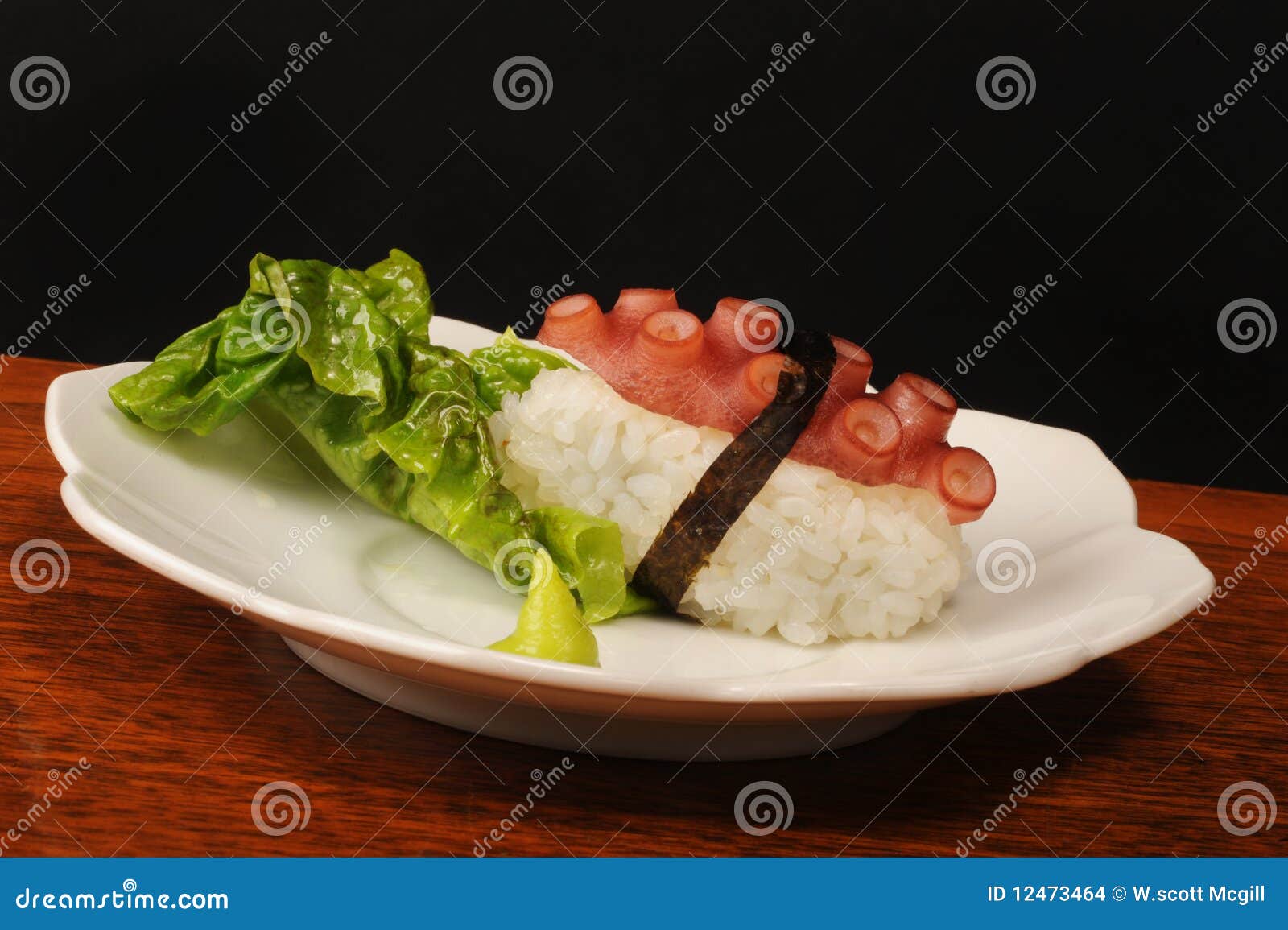

When eaten raw, octopus has a flavor similar to that of the sea – salty and sweet at the same time.Raw octopus may take on a delicate, nutty flavor depending on the ingredients used, which are typically sesame oil and garlic.Despite this, it keeps its smooth and slimy texture, which may also have a rubbery feel to it.When cooked on its own, this shellfish can have a quite bland flavor when consumed. It’s a mild-flavored food with a firm texture and moderate flavor that’s commonly seen in sushi restaurants. Octopuses are cephalopods, which means they are related to squid and cuttlefish.

What exactly is Tako? Tako () is a kind of octopus.
Octopus sushi skin#
It is because of this that the octopus’s skin develops a vibrant purple/red color, while the flesh turns white. When you buy tako (octopus) in Japan, it’s common for it to arrive already cooked. What is the most common type of octopus in Japan?Īccording to Japanese culinary tradition, the most common species of octopus used in sushi and salads is referred to as ‘Madako,’ which translates as ″common octopus.″ In a surprising turn of events, the madako octopus is imported from Africa, where it may grow to reach up to 2 feet long and weigh between 9 and 11 KGs.Ĭontrary to common opinion, octopus is rarely consumed raw due to the fact that it is far too chewy. Tako Sushi – Sushi Items (Octopus) Tako (Octopus) might be intimidating for people who are new to sushi or who are cooking sushi at home for the first time.If you’re not used to eating it, it appears unusual to people who aren’t.It has a chewy texture that requires thin slicing in order to be served as an appetizer or sashimi dish.Tako is a bit of an outlier in the realm of sushi in that it is virtually always cooked before being served. 2 What is the most common type of octopus in Japan?.


The very top of the tentacles where they conjoin into the head will probably also have a gelatinous layer right under the skin that’s not too edible either so should be removed as well. You’ll probably find the skin around the head to be very tough. Slice on an angle, then serve as you like. Remove the octopus from the water and let it dry a bit. Overnight is great if you can manage it, it’s the slow cooling that tenderizes it.


 0 kommentar(er)
0 kommentar(er)
